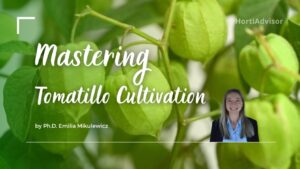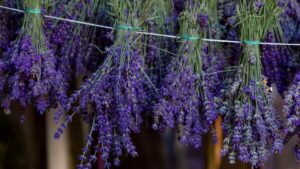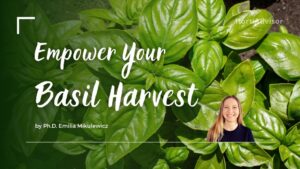Honeyberry Pruning: The Ultimate Guide to Boost Your Yield
Discover the secrets to unlocking bountiful harvests with our ultimate guide to honeyberry pruning. Master essential techniques, avoid common mistakes, and learn how to shape your plants for maximum yields. Your honeyberries will thank you, and so will your taste buds.
 Planting, Pruning & Watering
Planting, Pruning & Watering Introduction: The Art of Honeyberry Pruning
Discovering Honeyberries: A Fruitful Delight
Honeyberry plants, scientifically classified as Lonicera caerulea, represent a distinctive fruit within the honeysuckle family. Often referred to as haskap, these cold-hardy fruits originate from Russia, China, and northern areas of Japan. Honeyberry plants produce fruits with a flavor reminiscent of a blend between blueberries and raspberries. Rich in antioxidants, vitamins, and minerals, honeyberries are a favored option for both home gardeners and commercial cultivators due to their delightful taste and health benefits.
Why Prune Honeyberries?
Pruning honeyberries is an essential part of their care, as it helps maintain plant health, control growth, and increase fruit production. By removing dead, damaged, or overcrowded branches, pruning allows sunlight and air to reach the interior of the plant, promoting better growth and reducing the risk of diseases and pests. Moreover, proper pruning encourages the development of strong, well-structured branches capable of supporting a bountiful harvest.
Benefits of Honeyberry Pruning
- Enhanced fruit production: Pruning stimulates the growth of fruit-producing wood and helps create a more balanced plant, leading to a more abundant harvest.
- Better plant health: Removing dead or damaged branches reduces the risk of diseases and pests, ensuring a healthier, more vigorous plant.
- Improved plant structure: Pruning shapes the plant and encourages a strong framework, resulting in a more attractive and stable honeyberry bush.
- Controlled growth: Regular pruning allows gardeners to manage the size and shape of their honeyberry plants, making them more suitable for their garden space.
Understanding Honeyberry Pruning Techniques
Diving into the Types of Honeyberry Pruning
When it comes to pruning honeyberries, there are several techniques that gardeners can use to keep their plants happy and fruitful. Let's explore these methods and discover how they can bring out the best in your honeyberry bushes:
- Tip Pruning: This technique involves snipping off the tips of young shoots to encourage branching and a bushier growth habit.
- Heading Back: Heading back involves cutting back older branches to a healthy bud or lateral branch, promoting the growth of new fruiting wood.
- Thinning Out: Thinning out is the removal of entire branches, either because they're dead, damaged, or overcrowded, to improve air circulation and light penetration.
- Renewal Pruning: This method entails removing older, less productive branches at ground level to stimulate the growth of new, more fruitful canes.
Gearing Up: Tools for Honeyberry Pruning
Before we dive into pruning our honeyberry bushes, let's gather the right tools for the job. Having the proper equipment will make the process more efficient and enjoyable. Here are the essential tools you'll need:
- Pruning Shears: Also known as secateurs or hand pruners, these are perfect for cutting small branches up to 3/4-inch in diameter.
- Loppers: Loppers have longer handles, providing more leverage for cutting branches up to 2 inches in diameter.
- Pruning Saw: For branches too large for loppers, a pruning saw is ideal, offering precise and clean cuts on branches up to 5 inches in diameter.
- Gloves: A good pair of gloves will protect your hands from sharp branches and potential splinters.
When to Prune Honeyberries?
Now that we've got our tools ready, let's talk about timing. Knowing when to prune your honeyberry plants is crucial for achieving the best results. Honeyberries should be pruned during their dormant season, which usually falls between late winter and early spring, just before new growth begins. Pruning during dormancy allows the plant to focus its energy on producing new growth and fruit, resulting in a more bountiful harvest. So, mark your calendar and make it a fun, annual pruning party!
Getting Ready: Preparing for Honeyberry Pruning
Step 1: Clean and Disinfect Your Pruning Tools
Before you begin pruning your honeyberry plants, it's essential to ensure your tools are clean and disinfected. Dirty or contaminated tools can spread diseases and pests from one plant to another. Follow these simple steps for tool maintenance:
- Remove any dirt or debris from the blades using a stiff brush or cloth.
- Disinfect the blades with a solution of 10% bleach and 90% water, or use a household disinfectant spray. Allow the tools to air dry before use.
- Keep your tools sharp to ensure clean, precise cuts that minimize plant stress and reduce the risk of infections.
Step 2: Suit Up with Proper Clothing and Protective Gear
Pruning honeyberries involves working with sharp tools and handling branches, so it's crucial to wear appropriate clothing and protective gear for your safety. Here's what you should wear:
- Gloves: Choose a pair of durable gloves to protect your hands from cuts and scratches.
- Long-sleeved shirt: A long-sleeved shirt will shield your arms from scratches while reaching into the plant's interior.
- Long pants: Long pants will protect your legs from cuts and potential insect bites or stings.
- Closed-toe shoes: Wear sturdy, closed-toe shoes to protect your feet from falling branches and sharp tools.
- Safety glasses (optional): If desired, safety glasses can protect your eyes from dust and debris.
Step 3: Spot the Problem: Identifying Dead and Damaged Branches
Before you start cutting, take a moment to examine your honeyberry plant and identify any dead, damaged, or diseased branches that need removal. Here are some tips to help you spot problem branches:
- Dead branches: Dead branches often have a brittle texture, dark color, and no leaves or buds. They may also snap easily when bent.
- Damaged branches: Look for branches with signs of physical damage, such as cracks, splits, or broken sections.
- Diseased branches: Diseased branches may display signs of infection, such as discolored leaves, fungal growth, or oozing sap.
Mastering Honeyberry Pruning Techniques
Tip Pruning: Encourage Bushier Growth
Tip pruning is a technique used to promote branching and create a bushier growth habit in honeyberry plants. By snipping off the tips of young shoots, you encourage the plant to produce additional side branches, resulting in a fuller appearance. To tip prune your honeyberry plants, follow these steps:
- Identify the young, soft shoots on your plant.
- Using your pruning shears, remove the top 1-2 inches of each shoot.
- Make your cuts just above a leaf node or bud to encourage branching at that point.
Heading Back: Stimulate New Fruiting Wood
Heading back is a pruning method that encourages the growth of new fruiting wood by cutting back older branches. By removing a portion of the older growth, you redirect the plant's energy into producing new shoots that will bear fruit. To perform heading back on your honeyberry plants, follow these guidelines:
- Select older branches that have become less productive.
- Cut the branch back to a healthy bud or lateral branch, leaving about 1/4 inch above the bud or branch.
- Make your cuts at a slight angle, facing away from the bud or branch, to prevent water from pooling on the cut surface.
Thinning Out: Improve Air Circulation and Light Penetration
Thinning out is a pruning technique that involves removing entire branches to improve air circulation and light penetration within the plant. This method is particularly useful for removing dead, damaged, or overcrowded branches. To thin out your honeyberry plants, follow these steps:
- Identify the branches you want to remove, such as dead or damaged ones, or those that are crossing or overcrowding the plant.
- Using your pruning shears or loppers, cut the branch as close to the main stem or trunk as possible, without damaging the collar (the raised area where the branch meets the stem).
- Remove any remaining stubs to maintain a clean appearance and reduce the risk of infection.
Renewal Pruning: Rejuvenate Your Honeyberry Plant
Renewal pruning is a technique used to rejuvenate honeyberry plants by removing older, less productive branches at ground level. This method stimulates the growth of new, more fruitful canes, resulting in a more vigorous and productive plant. To perform renewal pruning on your honeyberry plants, follow these guidelines:
- Identify the oldest, least productive canes in your honeyberry plant. These canes are typically thicker, with a darker color and less vigorous growth.
- Using loppers or a pruning saw, cut the selected canes as close to the ground as possible, being careful not to damage any new shoots or canes.
- Remove up to one-third of the oldest canes each year to maintain a balance of new and old growth, ensuring continuous fruit production.
Artful Gardening: Training and Shaping Honeyberry Plants
Accommodating Upright and Spreading Growth Habits
Honeyberry plants can exhibit two primary growth habits: upright and spreading. Understanding these growth habits will help you shape and train your plants for optimal fruit production and aesthetic appeal. Upright honeyberries grow tall with a more vertical branching structure, while spreading honeyberries have a wider, more horizontal growth pattern. Consider the following tips when training your honeyberry plants:
- For upright varieties, focus on maintaining a central leader and promoting vertical growth.
- For spreading varieties, encourage horizontal branching and limit vertical growth to prevent the plant from becoming too tall.
- Prune each type according to its natural growth habit to achieve a balanced, productive plant.
Take Control: Managing Height and Width
Keeping your honeyberry plants within a manageable size makes it easier to harvest the fruit and maintain the plants' overall health. Controlling the height and width of your plants involves strategic pruning and training. Here are some techniques to help manage your honeyberry plants' size:
- Perform annual pruning to remove excessive growth and maintain the desired size.
- For height control, prune the tips of the tallest branches to encourage branching at a lower height.
- To manage width, remove or shorten branches that extend beyond the desired width of the plant.
Espalier and Trellis Techniques
Espalier and trellis techniques offer a visually appealing way to train and shape your honeyberry plants while maximizing fruit production in limited spaces. These methods involve training the plant's branches along a flat surface, such as a wall or fence, or on a freestanding trellis. To train your honeyberry plants using espalier or trellis techniques, follow these steps:
- Choose a suitable support structure, such as a wall-mounted espalier frame or freestanding trellis.
- Plant your honeyberry near the support structure, allowing for sufficient space to grow and spread.
- As your plant grows, gently tie branches to the support structure using soft plant ties or strips of cloth, guiding the branches in the desired direction.
- Prune and shape the plant regularly to maintain the desired form and prevent overcrowding.
| Technique | Benefits | Challenges | Best Practices |
|---|---|---|---|
| Espalier | Space-saving, decorative, promotes air circulation and sunlight exposure | Requires skill, patience, and regular maintenance | Choose suitable plant species, provide strong support structure, prune and train regularly |
| Trellis | Easier to install, versatile, improves air circulation and sunlight exposure | May require more space, needs sturdy materials for support | Select appropriate trellis design, install securely, monitor plant growth and provide necessary support |
By understanding and implementing these training and shaping techniques, you can create an attractive and productive honeyberry garden that is both functional and visually appealing. With the right approach to pruning, your honeyberry plants can become a stunning focal point in your landscape, while providing you with a bountiful harvest of delicious fruit.
Common Honeyberry Pruning Mistakes to Avoid
Overzealous Pruning: The Risks of Over-pruning
While pruning is essential for healthy honeyberry plants, over-pruning can be detrimental. Excessive pruning can stress your plants, reduce fruit production, and make them more susceptible to pests and diseases. To avoid over-pruning, follow these guidelines:
- Prune no more than one-third of the plant's total branches each year.
- Focus on removing dead, damaged, or diseased wood first before making any additional cuts.
- Avoid pruning during the plant's active growth or fruiting stage, as this can negatively impact fruit yield.
The Right Tools for the Job: Avoiding Improper Tool Use
Using the wrong tools or improperly using the right tools can cause damage to your honeyberry plants and hinder their growth. Keep these tips in mind to prevent improper tool use:
- Use sharp, clean pruning shears, loppers, or saws specifically designed for pruning tasks.
- Match the tool size to the size of the branch, using shears for smaller branches and loppers or saws for larger branches.
- Make clean, angled cuts to promote quick healing and avoid tearing or crushing the plant tissue.
Healthy Plant is a Happy Plant: Addressing Disease and Pest Management
Neglecting disease and pest management can lead to unhealthy plants and reduced fruit yield. Implement these strategies to prevent and manage common honeyberry diseases and pests:
- Inspect your plants regularly for signs of disease or pest infestation, such as discolored leaves, wilting, or chewed foliage.
- Prune out any diseased or infested branches promptly to prevent the spread of pathogens or pests.
- Employ organic or chemical controls as needed, following label instructions and local regulations.
Clean Cuts: The Importance of Sanitizing Tools
Failing to sanitize your pruning tools can spread diseases and pests among your honeyberry plants. To prevent this, follow these best practices for tool sanitation:
- Sanitize your tools before and after each pruning session using a solution of 10% bleach or rubbing alcohol.
- Wipe the blades with a clean cloth or paper towel after each cut when pruning diseased or infested branches.
- Allow tools to air dry after sanitizing to prevent rust and ensure they remain in good working condition.
By being aware of these common honeyberry pruning mistakes and taking the necessary steps to avoid them, you'll be better equipped to maintain the health and productivity of your honeyberry plants. With proper pruning techniques and plant care, you can enjoy a bountiful harvest of delicious honeyberries for years to come.
Keep Your Honeyberries Thriving: Pruning Maintenance and Care
Yearly Maintenance Pruning: Ensuring Long-term Plant Health
Consistent yearly maintenance pruning is essential for keeping your honeyberry plants healthy and productive. Here's what you need to consider for annual pruning:
- Prune during late winter or early spring when plants are dormant, before new growth begins.
- Focus on removing dead, damaged, or diseased branches, as well as branches that cross or rub against each other.
- Encourage a balanced and open structure by pruning out branches that overcrowd the center of the plant, allowing for better air circulation and light penetration.
Post-Pruning Care: Encouraging Plant Recovery
Proper post-pruning care is crucial to help your honeyberry plants recover and thrive. Follow these tips to support your plants after pruning:
- Water your plants deeply and regularly, especially during the first few weeks after pruning, to encourage root development and new growth.
- Mulch around the base of your plants to help retain soil moisture and maintain a consistent soil temperature.
- Monitor your plants for signs of stress, disease, or pest infestations, and address issues promptly to promote recovery.
Fertilization and Nutrient Management: Supporting Plant Growth
Fertilization and nutrient management play a vital role in maintaining the health and productivity of your honeyberry plants. Here's how to provide the necessary nutrients:
- Conduct a soil test to determine the nutrient levels and pH of your soil, and amend as needed based on the results.
- Apply a balanced, slow-release fertilizer in early spring, following label instructions and recommended application rates.
- Consider supplementing with organic matter, such as compost or well-rotted manure, to improve soil fertility and structure.
| Nutrient | Role in Plant Growth | Sources |
|---|---|---|
| Nitrogen (N) | Essential for leaf and stem growth; promotes lush, green foliage | Slow-release fertilizer, compost, aged manure, blood meal, fish meal |
| Phosphorus (P) | Supports strong root development, flower and fruit production, and overall plant health | Bone meal, rock phosphate, composted manure, worm castings |
| Potassium (K) | Enhances disease resistance, strengthens cell walls, and improves overall plant vigor | Wood ash, compost, greensand, kelp meal, potassium sulfate |
| Calcium (Ca) | Helps build strong cell walls, promotes root development, and improves nutrient uptake | Gypsum, lime, bone meal, eggshells, dolomite lime |
| Magnesium (Mg) | Assists with photosynthesis, supports fruit development, and regulates nutrient uptake | Epsom salt, dolomite lime, magnesium sulfate, compost |
| Sulfur (S) | Contributes to protein synthesis, chlorophyll production, and overall plant growth | Elemental sulfur, gypsum, Epsom salt, compost, manure |
By implementing these maintenance and care practices, you can support the long-term health and productivity of your honeyberry plants. Consistent pruning, attentive post-pruning care, and proper fertilization and nutrient management will ensure that your honeyberry garden thrives and yields an abundant harvest each season.
Troubleshooting Honeyberry Pruning Problems
Pruning honeyberries can sometimes come with its own set of challenges. In this section, we'll address common issues that may arise during the pruning process, along with expert advice on how to resolve them.
Dealing with Branch Dieback
Branch dieback can occur due to a variety of reasons, such as disease, pests, or environmental stress. If you notice dieback, assess the situation and take appropriate action to prevent further damage.
- Prune away dead or dying branches, cutting back to healthy wood.
- Ensure proper watering and fertilization to reduce stress on the plant.
- Inspect the plant for signs of disease or pest infestation and treat accordingly.
Avoiding Incorrect Pruning Cuts
Incorrect pruning cuts can lead to poor plant health and reduced yields. To avoid this issue, follow these best practices:
- Make clean, angled cuts just above a healthy bud or branch collar.
- Avoid tearing or jagged cuts, which can invite disease and pests.
- Do not leave stubs, as they can die back and create entry points for pathogens.
Managing Disease and Pest Infestations
Disease and pest infestations can cause significant damage to honeyberry plants. Detecting and addressing these issues early is crucial:
- Monitor your plants regularly for signs of disease or pests.
- Prune away affected branches and dispose of them properly.
- Employ organic or chemical treatments as needed, following label instructions.
- Keep the area around your plants clean and free of debris to reduce potential hiding spots for pests.
By addressing these common pruning problems, you can ensure the health and productivity of your honeyberry plants for years to come.
Summary
In this comprehensive guide, we've covered the various aspects of honeyberry pruning to help you improve the health, vigor, and productivity of your plants. Let's take a moment to recap the key techniques and considerations before wrapping up.
Recap of Honeyberry Pruning Techniques
Throughout this guide, we've discussed several important pruning techniques, including:
- Tip Pruning
- Heading Back
- Thinning Out
- Renewal Pruning
We've also addressed how to prepare for pruning, train and shape your plants, avoid common pruning mistakes, and maintain your honeyberry plants with proper care and nutrient management. All these techniques work together to promote healthy growth and bountiful harvests.
Final Thoughts and Considerations
As you venture into the world of honeyberry pruning, remember that consistency and attention to detail are crucial. Regularly monitor your plants for signs of disease, pests, and other issues, and address them promptly to ensure optimal plant health.
Don't forget the importance of proper tool maintenance, including cleaning and disinfecting, as well as wearing appropriate protective gear to keep both you and your plants safe.
Lastly, remember that each plant is unique, and its specific needs may vary depending on factors such as climate, soil, and variety. Continue to educate yourself and seek expert advice when needed to make the most of your honeyberry pruning endeavors.
By following the advice in this guide, you'll be well on your way to mastering honeyberry pruning and enjoying the fruits of your labor. Happy pruning!










